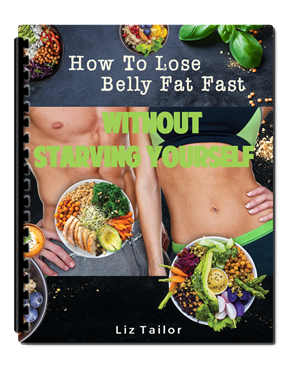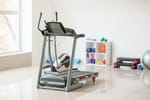High blood pressure, or hypertension, is a silent but significant threat to health, affecting millions across the globe.
Left unchecked, it can pave the way to serious complications, including heart disease, stroke, and kidney issues.
Thankfully, there are simple, evidence-based strategies to bring those numbers down and maintain better health.
As you embark on this journey towards balanced blood pressure, you'll find that taking control is not only possible but achievable through practical steps.
Ready to start transforming your health?
Let's dive into the top ten tips to lower your blood pressure and enhance your well-being.
1)) Reduce Your Salt Intake
Eating too much salt is one of the biggest contributors to high blood pressure.
The recommended daily salt intake is less than 2,300 milligrams per day, which is about a teaspoon of salt.
Check food labels and try to avoid foods that are high in sodium.
Tips to Reduce Salt Intake:
- Cook with Herbs and Spices: Enhance flavors without salt by using herbs like basil, thyme, and spices like black pepper or cinnamon.
- Choose Fresh, Whole Foods: Opt for fresh produce, lean meats, and whole grains rather than processed foods, which often contain added salts.
- Limit Processed and Packaged Foods: Convenience foods such as chips, canned soup, and lunch meats are typically high in sodium. Look for low-sodium alternatives.
- Rinse Canned Foods: When using canned beans or vegetables, rinse them under water to remove excess sodium before consumption.
- Ask for Low-Salt Options at Restaurants: When dining out, request that your meal be prepared with less salt, or ask for dressings and sauces on the side.
By focusing on reducing your salt intake, you take an essential step towards managing your blood pressure.
Incorporating these tips into your daily routine can lead to sustainable, long-term health benefits and significantly reduce the risks associated with hypertension.
Small changes, like choosing fresh foods or opting for low-sodium alternatives, can have a big impact on your well-being.
Remember, every effort counts on your journey towards healthier living.
2)) Increase Your Potassium Intake
Potassium is in many foods such as fruits, vegetables, dairy, and fish. Research has shown that a diet high in potassium can help lower blood pressure. The recommended daily potassium intake is 3,500 milligrams per day.
Tips to Increase Potassium Intake:
- Incorporate More Fruits and Vegetables: Include potassium-rich options like bananas, oranges, sweet potatoes, and spinach in your meals and snacks.
- Opt for Legumes and Beans: Foods such as lentils, chickpeas, and kidney beans are excellent sources of potassium and can be used in a variety of dishes.
- Include Dairy Products: Incorporate low-fat milk, yogurt, and cheese, which are not only potassium-rich but also good for overall health.
- Choose Lean Meats and Fish: Lean meats and fish like salmon and tuna provide potassium and can be part of a balanced diet.
- Snack on Nuts and Seeds: Almonds, sunflower seeds, and other nuts not only boost potassium intake but also provide healthy fats.
Increasing your potassium intake is a powerful strategy to combat high blood pressure effectively.
By integrating more fruits, vegetables, legumes, dairy, and lean meats into your diet, you can harness the natural benefits of potassium, promoting heart health and overall well-being.
These dietary adjustments are not only beneficial for blood pressure but also contribute to a well-rounded and nutritious diet, supporting a healthier lifestyle overall.
3)) Maintain A Healthy Weight
Being overweight or obese can increase your risk of developing high blood pressure.
Losing weight can help reduce blood pressure and improve your overall health. A healthy body mass index (BMI) is between 18.5 and 24.9.
Tips to Maintain a Healthy Body Weight:
- Adopt a Balanced Diet: Focus on eating a variety of fruits, vegetables, whole grains, lean proteins, and healthy fats to provide essential nutrients without excess calories.
- Practice Portion Control: Be mindful of portion sizes to avoid overeating. Using smaller plates can help manage portions better.
- Engage in Regular Physical Activity: Aim for at least 150 minutes of moderate aerobic exercise, like brisk walking or cycling, each week to help maintain weight.
- Stay Hydrated: Drinking plenty of water can help manage hunger and reduce the likelihood of consuming calorie-dense drinks.
- Monitor Progress: Regularly track your weight and dietary habits to identify patterns and make necessary adjustments that support your weight management goals.
Maintaining a healthy weight plays a crucial role in managing blood pressure and enhancing overall health.
By adopting sustainable dietary practices, engaging in regular physical activity, and monitoring your progress, you can support your weight management goals effectively.
These lifestyle choices offer lasting benefits, not only aiding in blood pressure reduction but also contributing to improved vitality and well-being. Embrace these habits to foster a healthier, more balanced life.
4)) Exercise Regularly
Regular physical activity is beneficial for both mental and physical health. Exercise can help reduce blood pressure by strengthening your heart and improving blood flow. Shoot for at least 30 minutes of moderate exercise per day.
You can take a brisk walk on a treadmill, ride a stationary bike, or get a quick workout in with some exercise equipment.
Example 5-Day Beginner Workout Routine
Day 1: Cardio and Strength Training
- Warm-up: 5 minutes brisk walk on the treadmill
- Treadmill: 20 minutes of walking or light jogging
- Dumbbell Exercises:
- Dumbbell Squats: 3 sets of 10 reps
- Bent-over Dumbbell Rows: 3 sets of 10 reps on each side
- Cool down: 5 minutes of stretching
Day 2: Active Rest and Recovery
- Take a leisurely walk for 30 minutes or engage in yoga or light stretching
Day 3: Mixed Cardio and Strength
- Warm-up: 5 minutes of light cycling on the stationary bike
- Stationary Bike: 15 minutes of moderate-intensity cycling
- Barbell Exercises:
- Barbell Bench Press: 3 sets of 8-10 reps
- Barbell Deadlifts: 3 sets of 8 reps
- Cool down: 5 minutes of stretching
Day 4: Active Rest
- Perform 10 minutes of core exercises, such as planks and sit-ups, and 20 minutes of light walking
Day 5: Endurance and Core
- Warm-up: 5 minutes brisk walk on the treadmill
- Treadmill: 15 minutes alternating brisk walk and light jog
- Dumbbell and Bodyweight Exercises:
- Dumbbell Shoulder Press: 3 sets of 10 reps
- Push-ups: 3 sets of 10 reps
- Cool down: 5 minutes stretching focusing on the legs and back
This example routine is designed to boost cardiovascular health, strengthen muscles, and support a healthy lifestyle.
Always ensure to listen to your body, and consult with a healthcare professional before starting any new exercise program.
Exercising regularly is a foundational pillar in managing and reducing blood pressure.
By incorporating consistent workouts into your routine, such as cardio and strength training, you can enhance cardiovascular health and promote overall fitness.
This commitment to physical activity not only aids in reducing hypertension but also fosters a more energetic and resilient body.
Embrace these exercise habits to experience substantial health improvements and enjoy a more active lifestyle.
5)) Quit Smoking
Smoking is a leading cause of cardiovascular disease and can increase blood pressure. Quitting smoking can have a significant positive impact on your health, including lowering blood pressure.
Tips to Quit Smoking:
- Identify Triggers and Avoid Them: Recognize situations or patterns that lead to smoking and find ways to circumvent these triggers. This could involve modifying routines or engaging in alternative activities.
- Seek Professional Support: Consult healthcare professionals or smoking cessation programs that offer guidance, counseling, and sometimes medication to assist in quitting.
- Utilize Nicotine Replacement Therapy: Consider using nicotine patches, gum, or lozenges to gradually reduce dependence on nicotine while managing withdrawal symptoms.
- Stay Busy with New Activities: Find hobbies or activities that occupy your hands and mind, reducing cravings and the urge to smoke.
- Build a Support Network: Surround yourself with friends, family, or support groups who encourage your goal, providing accountability and motivation on your journey to quit smoking.
Quitting smoking is a transformative step towards better health and significantly impacts blood pressure reduction.
By eliminating this harmful habit, you enhance your cardiovascular health and decrease the risk of heart disease.
Embracing a smoke-free lifestyle not only benefits blood pressure levels but also improves overall well-being, leading to a healthier, more vibrant life.
Use these strategies and support systems to guide your journey toward becoming smoke-free.
6)) Limit Alcohol Consumption
Drinking too much alcohol can increase blood pressure. The American Heart Association recommends that men limit their alcohol intake to two drinks per day, while women should limit their intake to one drink per day.
Tips to Limit Alcohol Consumption:
- Set Clear Limits: Decide on a specific number of drinks you will consume in a week and adhere to this limit. Keep track of your consumption to maintain accountability.
- Choose Alcohol-Free Days: Designate specific days when you refrain from drinking alcohol, allowing your body time to recover and reduce your overall intake.
- Find Alternatives: Replace alcoholic drinks with non-alcoholic options, like sparkling water, herbal teas, or flavored sodas, to satisfy your cravings without increasing alcohol consumption.
- Drink Slowly: Savor each drink, taking small sips to extend the time it takes to finish a beverage. This can help reduce the overall number of drinks consumed in one sitting.
- Avoid Drinking Triggers: Recognize situations or environments that trigger your urge to drink, and find ways to avoid or cope with these triggers effectively.
Limiting alcohol consumption is a crucial step in managing blood pressure and supporting cardiovascular health.
By setting boundaries and finding healthier alternatives, you can reduce alcohol's negative impacts on your body and enhance overall well-being.
These strategies not only lower the risk of hypertension but also contribute to a more balanced and health-conscious lifestyle, paving the way for sustained heart health and vitality.
7)) Reduce Stress
Chronic stress can contribute to high blood pressure. Find healthy ways to manage stress such as meditation, yoga, or deep breathing exercises.
5-Day Beginner Stress-Reduction Workout Routine
Day 1: Meditation and Gentle Yoga
- Morning: 10 minutes of mindfulness meditation
- Evening: 20-minute gentle yoga session focusing on relaxation and deep stretches
Day 2: Deep Breathing and Walking
- Morning: 5 minutes of deep breathing exercises, focusing on slow inhales and exhales
- Evening: 30-minute brisk walk in a natural setting, emphasizing mindful breathing
Day 3: Restorative Yoga and Meditation
- Morning: 15-minute restorative yoga with poses that promote relaxation
- Evening: 10 minutes of guided meditation focusing on stress release
Day 4: Breathing Techniques and Stretching
- Morning: Practice 5 different deep breathing techniques for a total of 10 minutes
- Evening: 20 minutes of full-body stretching, concentrating on slow and controlled movements
Day 5: Yoga and Visualization
- Morning: 20 minutes of yoga focusing on balance and flexibility
- Evening: 10-minute visualization meditation, imagining peaceful and calming scenes
This routine aims to progressively reduce stress levels by integrating meditation, yoga, and breathing exercises into your daily routine.
Consistent practice can help regulate blood pressure and improve overall well-being.
Reducing stress is an essential component in maintaining healthy blood pressure levels and enhancing overall well-being.
By incorporating practices such as meditation, yoga, and deep breathing exercises into your daily routine, you can effectively manage stress and promote relaxation.
These activities not only help in lowering hypertension but also cultivate a sense of peace and mental clarity.
Embrace these stress-reduction techniques to support your journey toward better heart health and a balanced lifestyle.
8)) Get Enough Sleep
Achieving sufficient sleep is a vital factor in managing blood pressure levels and enhancing overall cardiovascular health.
Sleep serves as a restorative process for your body and mind, allowing essential physiological functions to occur, such as regulating stress hormones and maintaining proper blood vessel health.
Sleep deprivation or poor-quality sleep can lead to increased stress levels and hormonal imbalance, which can elevate blood pressure and strain the heart.
Consistent, high-quality sleep contributes to lowering hypertension by ensuring the body's systems operate optimally, thus reducing the risk of heart disease.
By prioritizing a regular sleep schedule of seven to eight hours per night, you not only support your heart health but also improve cognitive function, emotional well-being, and energy levels, paving the way for a healthier, more vibrant life.
Prioritizing sufficient sleep is crucial for maintaining optimal blood pressure levels and ensuring overall health.
Consistent, restful sleep acts as a natural reset for your body, enabling it to manage stress effectively and preserve heart health.
Commit to a regular sleep schedule to harness these benefits and support long-term well-being.
9)) Monitor Your Blood Pressure
Regular monitoring of your blood pressure levels can help you identify any changes and take action to lower your blood pressure.
Consult your doctor on how often to monitor your blood pressure.
Pro-Tip: Investing in a high-quality blood pressure monitor is an important step to take for anyone looking to better understand and manage their health A high-quality device can ensure accurate, reliable readings and provide you with the data needed to make informed healthcare decisions.
High-end monitors may also come with advanced features such as automatic inflation that reads your pressure and stores readings for quick reference.
By investing in a quality blood pressure monitor, you can be sure that you’re getting the most accurate information about your health.
So if you’re looking to better understand and manage your blood pressure, consider purchasing a high-quality device today!
10)) Consider Medication
In some cases, lifestyle changes alone may not be enough to lower blood pressure.
Your doctor may recommend medications such as ACE inhibitors, beta-blockers, or diuretics to help manage your blood pressure.
Why You Should Consider Herbal Supplements
Taking herbal supplements can be a great way to help lower blood pressure.
Herbal supplements can provide your body with natural, plant-based compounds and vitamins that work synergistically to support healthy blood pressure levels.
By supplementing with herbs, you may be able to support healthy blood pressure levels without having to resort to medication.
Be sure to discuss any herbal supplements you are taking with your healthcare provider before beginning use so they can make sure the supplement is right for you.
Conclusion
Managing high blood pressure is essential for maintaining heart health and reducing the risk of serious complications.
By embracing a holistic approach that includes dietary adjustments, physical activity, stress management, and regular monitoring, you can take meaningful steps toward lowering your blood pressure.
These lifestyle modifications not only enhance cardiovascular wellness but also improve overall quality of life.
In some cases, herbal supplements and medication may provide additional support, and these options should be explored with your healthcare professional.
Taking proactive measures often leads to significant long-term health benefits, making even small efforts a worthwhile investment in your future well-being.
Remember to consult your doctor regularly and make informed decisions based on tailored medical advice.
Related Articles and Guides:
- How To Measure Blood Pressure At Home
- How To Lower Blood Pressure Naturally
- How To Prevent High Blood Pressure
Download Our Free E-book!







